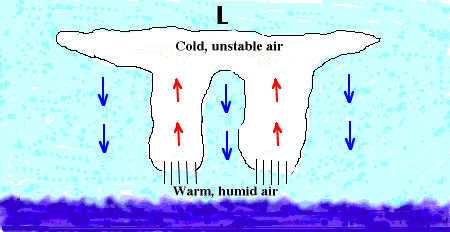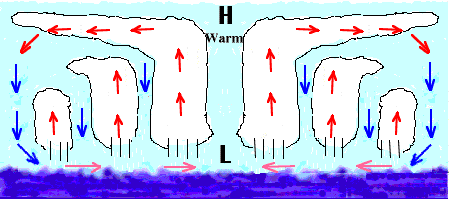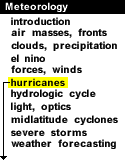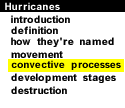
|
When a cold air mass is located above an organized cluster of tropical thunderstorms, an unstable atmosphere results. This instability increases the likelihood of convection, which leads to strong updrafts (red arrows) that lift the air and moisture upwards, creating an environment favorable for the development of large cumulonimbus clouds. A tropical disturbance is born, the first stage of a developing hurricane.

Animation by: Shao
Surface convergence (pink horizontal arrows in animation below) causes rising motion around a surface cyclone (labeled as "L"). The air cools as it rises (red vertical arrows) and condensation occurs, which releases latent heat into the atmosphere. This heating causes air to expand, creating an area of high pressure aloft. The force resulting from the established pressure gradient causes air to diverge at upper levels (red horizontal arrows).

Animation by: Shao
Since pressure is a measure of the weight of the air above a unit area, removal of air at upper levels subsequently reduces pressure at the surface. A further reduction in surface pressure leads to increasing convergence (due to an intensified pressure gradient), which further intensifies the rising motion, latent heat release, and so on. As long as favorable conditions exist, this process continues to build upon itself, ultimately resulting in the development of a hurricane.

movement |
|

development stages |



